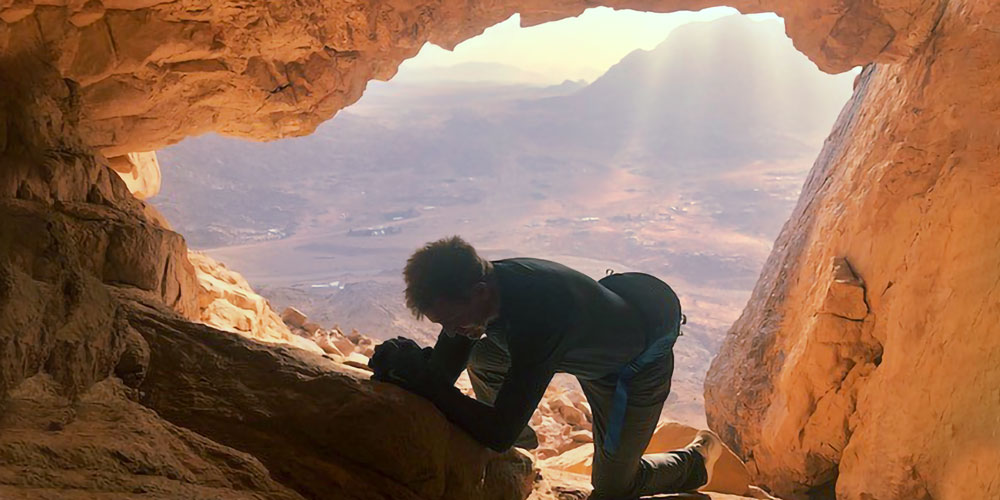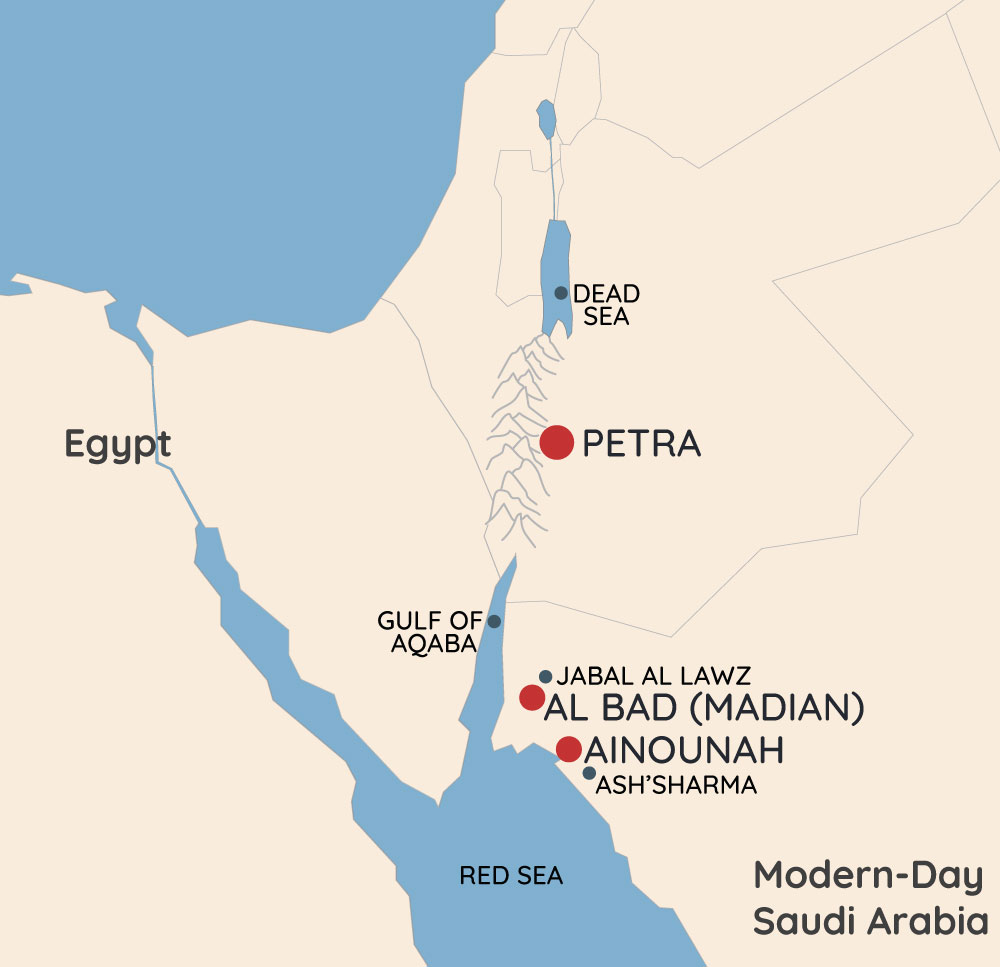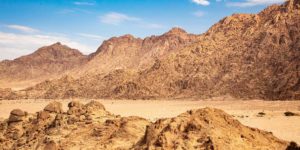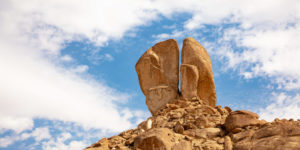Midian: The Land of Abraham’s Children?
By Jennifer Bartlett

Experience the Bible as you never have before on a Christian tour of Midian in Saudi Arabia! Learn of the legendary children of Abraham and who they really were, according to the Bible. Walk through the tombs where they may have been laid to rest. Explore the area near the Well of Moses, where he is said to have quenched his thirst after his journey from Egypt and to have met his wife Zipporah, daughter of the priest of Midian. Experience an unforgettable Red Sea cruise and biblical tour like no other!
Abraham Had 8 Sons?
Isaac and Ishmael
Most Bible-believing Christians know of Abraham’s sons, Isaac and Ishmael. In Genesis chapter 16, we learn that Ishmael was the son of Sarah’s handmaid Hagar, who was born when Abraham was 86 years old.
Genesis 16:2, 15, Hagar bears Abram a son
And Sarai said to Abram, “Behold now, the Lord has prevented me from bearing children. Go in to my servant; it may be that I shall obtain children by her.” And Abram listened to the voice of Sarai… And Hagar bore Abram a son, and Abram called the name of his son, whom Hagar bore, Ishmael (Gen. 16:2, 15).
When Abraham was 99, God promised to give him a son through Sarah, who was long past the age of childbearing. Abraham’s response:
Genesis 17:17-19, God again promises that Sarah shall bear a son
Then Abraham fell on his face and laughed and said to himself, “Shall a child be born to a man who is a hundred years old? Shall Sarah, who is ninety years old, bear a child?” And Abraham said to God, “Oh that Ishmael might live before you!” God said, “No, but Sarah your wife shall bear you a son, and you shall call his name Isaac. I will establish my covenant with him as an everlasting covenant for his offspring after him. As for Ishmael, I have heard you; behold, I have blessed him and will make him fruitful and multiply him greatly. He shall father twelve princes, and I will make him into a great nation. But I will establish my covenant with Isaac, whom Sarah shall bear to you at this time next year.” (Gen. 17:17-19)
The Sons of Keturah
In fulfillment of God’s promise, Sarah gave birth to Isaac at the appointed time, as recorded in Genesis 21:1-7. Yet after the death of Sarah, we read in Genesis 25 that “Abraham took another wife, whose name was Keturah. She bore him Zimran, Jokshan, Medan, Midian, Ishbak, and Shuah” (Gen. 25:1-2). Since God’s covenant to Abraham was to continue through Isaac, “Abraham gave all he had to Isaac. But to the sons of his concubines Abraham gave gifts, and while he was still living he sent them away from his son Isaac, eastward to the east country” (Gen. 25:5-6).
What is a concubine?
This word concubine refers to “a female in a formal, societally recognized, polygamous marriage relationship with a husband, usually with [fewer] rights than a wife.”
James Swanson, Dictionary of Biblical Languages with Semantic Domains : Hebrew (Old Testament) (Oak Harbor: Logos Research Systems, Inc., 1997).
Therefore, concubines in Genesis 25:6 clearly refers to Abraham’s other wives, Hagar and Keturah, whose sons lived in a land east of Isaac’s inheritance. Later in chapter 25, the twelve princes of Ishmael (as promised in Gen. 17:20) are listed by name, and are said to have “settled from Havilah to Shur, which is opposite [or facing] Egypt in the direction of Assyria.”
Where is “Shur,” and what does it mean?

While scholars are divided on where Havilah and Shur were located, in order to travel to Assyria from Egypt, one would head northeast, so this verse is consistent with the phrase, “eastward to the east country” in Genesis 25:6.
Shur means “wall” in Hebrew.
“שׁוּר (šûr)… Wall, i.e., a construction to constrain or protect from movements.” (James Swanson, Dictionary of Biblical Languages with Semantic Domains : Hebrew [Old Testament] [Oak Harbor: Logos Research Systems, Inc., 1997]).
According to biblical geographer Glenn Fritz, the most likely candidate for Shur is the ridge that acts like a wall as it runs along the eastern edge of the Arabah—a long valley shared by modern-day Israel and Jordan. Nestled into this dramatic terrain is Petra, a well-known Nabataean capital.
The Nabataeans were likely named for Nebaioth,
The Nabataeans were “considered to be descendants of Nebaioth, Ishmael’s oldest son (Gn 25:12–16; 1 Chr 1:29). According to the Jewish historian Josephus, Ishmael’s descendants inhabited an area all the way from the Euphrates to the Red Sea, calling it Nabatene. Their capital city, Sela, was called Petra in NT times.” (Walter A. Elwell and Barry J. Beitzel, “Aretas,” Baker Encyclopedia of the Bible [Grand Rapids, MI: Baker Book House, 1988], 168.)
who was, in fact, the firstborn son of Ishmael. If Fritz is correct in his placement of Shur, the association of Ishmael’s son(s) with this prominent ridge would support the biblical account.
Ainounah: Home of The Legends of Midian
One thing scholars do tend to agree on is that Midian, one of Keturah’s sons, lived in a region east of the Red Sea, in the northwest corner of modern Saudi Arabia, and it is here, in Ainounah, that we may discover real evidence for Midian and his brothers.
Ainounah, meaning “an eye of water,”
Glenn Fritz, The Exodus Mysteries of Midian, Sinai and Jabal al-Lawz (Vero Beach, FL: GeoTech, 2019), 66.
is a short distance from a natural harbor (for which the town is likely named), where the waters of Wadi Ainounah flow from higher ground. This site is less than 40 miles (~60 km) from Jabal al-Lawz, as the crow flies, and this is the very mountain considered by many to be the best candidate for Sinai, the Mountain of God.
Verdant Pastures
Fritz relates that Ainounah (also spelled Aynunah) and the surrounding area were described by the first-century Greek geographer, Strabo, as
“a plain, well-wooded and well supplied with water; it abounds with cattle of all kinds.”
Ibid.
Fritz then cites James Wellsted, who explored the Midian region in the early 19th century and reported that this area
“affords better pasturage than any part of the coast which I have seen. In this tract the Bedouins’ huts are numerous, and large flocks of sheep and goats are met with.”
Fritz, 68.
The Tombs of the Children of Abraham

In addition to being a lush pasture land, this area was also esteemed to be a holy place. In the 17th century, Haji Khalifah recorded that the locals of his time spoke of
“the grave of the children of Abraham near the sea.”
Fritz, 66
This “place of Pilgrimage” goes back to at least the first century BC, when Greek historian Diodorus, referring to the greater Ainounah Bay, said that “at that place is a most holy fame, held in highest honor by all Arabs.”
Ibid.
Whether this may refer to the burial site of the children of Keturah or to some of the Israelites, who may have passed through this area during their Sinai experience, is unclear.
Fritz, 69.
Perhaps now that this country is open to the West, more research can be done to confirm just who was buried in these tombs.
Ash-Sharma
There is an oasis 6.5 miles southeast of Ainounah called Ash’Sharma, which is set back into dense palm thickets. Here, shallow streams are bordered by steep, rocky slopes. In this setting there are
“several archaeological sites dating from the Midianite, Nabataean, and Islamic periods.”
Fritz, 71.
Some of these ruins have yielded Midianite pottery and evidence of habitation as far back as the 15th century BC, a time when some scholars think the Exodus occurred.
The Well of Moses at Madian
There is also a tradition connected with an area further north, in Madian (modern Al Bad’), that
“it contains, in addition to a spring of running water, that same well from which in former times our Lord Moosa (Moses) gave to the herds of Sho’aeib (Jethro) to drink.”
Wallin 1850, 318 from al-Sapahi, d. AD 1619 (Glenn Fritz, The Exodus Mysteries of Midian, Sinai and Jabal al-Lawz [Vero Beach, FL: GeoTech, 2019], 46).
This is a reference to Moses’ valiant defense of the daughters of Jethro (also called “Reuel” in Scripture) from some antagonistic shepherds, as recorded in Exodus 2:16-17.
Ash-Sharma Oasis may have been near the place Moses encountered the burning bush
After Jethro chided his girls for not inviting their hero home to meet ‘Dad,’ “Moses was content to dwell with the man, and he gave Moses his daughter Zipporah” (Ex. 2:21). If this lush oasis, just 20 miles (33 km) from Jabal al-Lawz, was where Jethro’s family watered their sheep, it is certainly plausible that Moses was near this very mountain when he encountered Yahweh in the burning bush!
With Living Passages, you can see the land of biblical Midian and his brothers for yourself! Walk among the lush date palms in the well-watered plain where Abraham’s children walked. Note the place where Moses may have met his bride. Bask in the awe and wonder of the mountain where God Himself may have appeared to Moses. Join us on a biblical journey through the Red Sea, and experience the Bible on a luxurious cruise and tour of Saudi Arabia!



